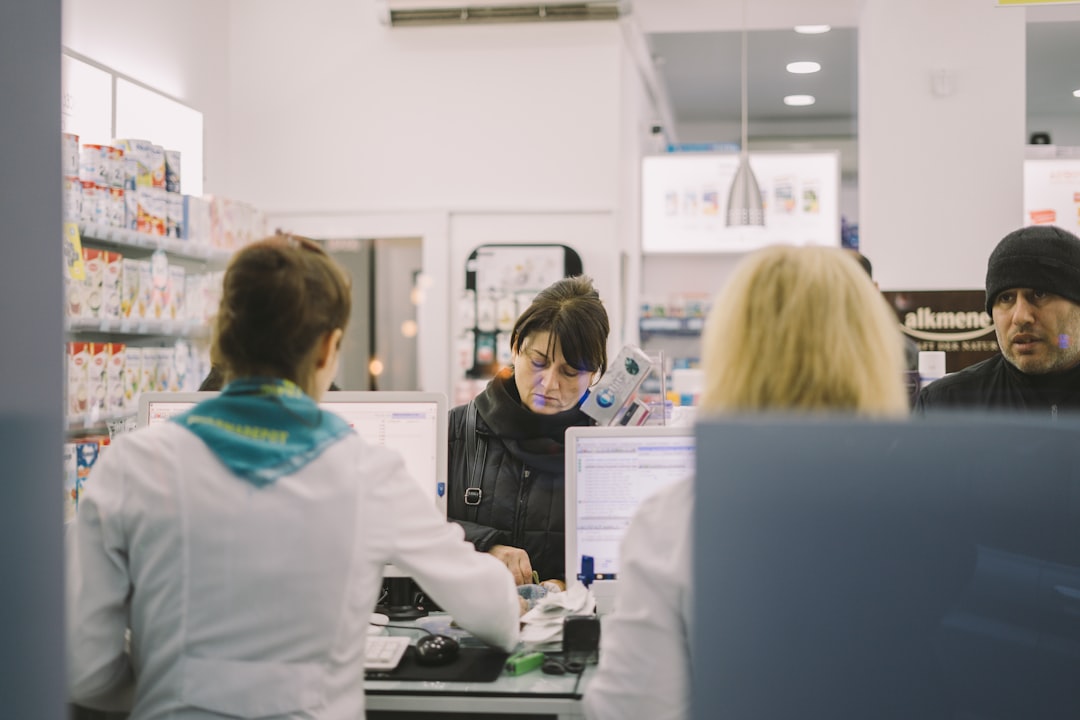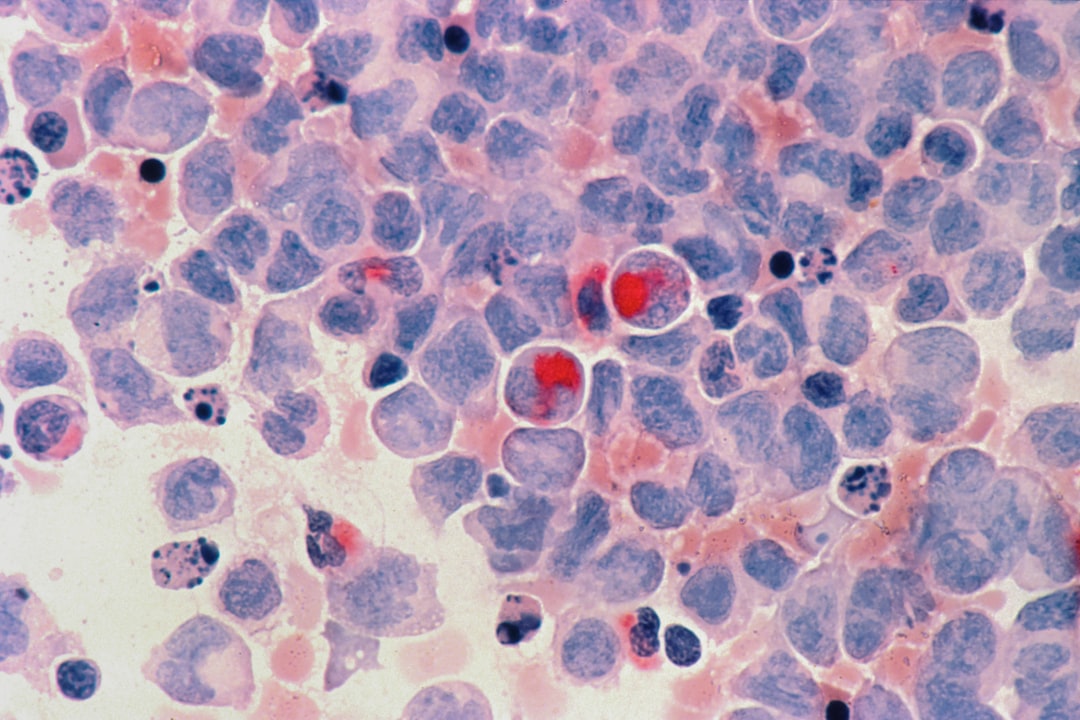What is it about?
What do the approaches of Single-Molecule Localization Microscopy/Nanoscopy/ Spectroscopy and Laser Scanning Microscopy or Single-Molecule Image Analysis as well as (temporally unlimited) Single-Molecule Tracking in liquids or live cells without immobilization on artificial or biological surfaces or without significant hydrodynamic flow tell us about a single molecule? The answer is: NOTHING !! Regarding the sections/cited papers on "Single-molecule localization imaging", single-molecule localization-based super-resolution microscopy, single-molecule localization microscopy, and "Perspectives" of the Review Article "Advanced imaging and labelling methods to decipher brain cell organization and function" by Daniel Choquet, Matthieu Sainlos & Jean-Baptiste Sibarita, Nature Reviews Neuroscience (2021), Published: 12 March 2021, here is the physical theory on it: Have a deeper look at the Theory of Single-Molecule Detection of one and the same molecule (the individual molecule) in dilute liquids and single live cells without significant hydrodynamic flow or immobilization on artificial or biological surfaces/membranes: The Single-Molecule Time Resolution in microsopy/nanoscopy (super-resolution microscopy)/ spectroscopy: https://pubmed.ncbi.nlm.nih.gov/23369193/ https://pubmed.ncbi.nlm.nih.gov/25543662/ and https://www.ncbi.nlm.nih.gov/pmc/articles/PMC3195905/ Tom Laue, Emeritus Professor UNH, Durham, New Hampshire, United States, wrote: I agree with you. My posts (see below) are merely a way to get students and non-biophysicists to understand what occurs during an interaction. I will be getting into the ergodic hypothesis later in this series where it will be clear that 'single molecule' behavior shouldn't be extrapolated to all molecule behavior. Forwarded Mar 8 at 3:51 PM POST: Fun facts: Molecular interactions So you have diffused to ~1 nanometer from a another protein. Your encounter has begun, and in roughly a nanosecond you will either touch the surface of the other protein, or be repelled by it. What happens in this nanosecond will occupy several posts... at the pace this is going, the pandemic will be waning when you do or do not touch. At 1 nm, you will experience the charge-charge interaction with, B, the name we'll assign to the other protein (you, of course being superior, are A). The interaction takes the form of a potential energy, U. The strength of U = QA*QB/Dr, where, QA is your net charge, QB is the net charge on B, r is the distance to the surface of B and D is the dielectric constant of the solvent (~80 for water at room temperature). Now this is a rough approximation for several reasons, each of which we need to consider. We will spend some time with each over the next few posts. We'll start with using the surface-to-surface distance... a glaringly poor choice from a physicists point of view.
Featured Image

Photo by Terry Vlisidis on Unsplash
Why is it important?
Why is this theory so attractive? There is direct and simple connection with measurements. This connection is based on the diffusion times of molecules. In fact, all conditions are only properties of the stochastic nature of diffusion times of single molecules. In the original paper where the equations and the concentration dependence of this modern theory of single-molecule detection at the level of the individual molecule, i.e., one and the same molecule, was formulated for the very first time, the derivations of the equations, remarks and explanations were given to justify the experimental conditions (criteria 1 to 3, the single-molecule time resolution Tm is the criterion 4 (Tm is the meaningful time for measuring just one and the same molecule in dilute liquids and live cells without immobilization on artificial surfaces or biological membranes as well as without significant hydrodynamic flow). In this theory, diffusion times are directly linked to selfsame molecule likelihood estimators as a consequence of the stochastic analysis of the thermodynamic system considered. The language of stochastic thermodynamics is the main advantage of the theory of single-molecule detection at the level of the individual molecule. The deductive reasoning does not require any data. This is the effectiveness of the formulas with which I precisely describe the real conditions, some of which are far beyond what can be observed with current technologies. In other words, the theory and its natural laws have practical uses and consequences. The advantages of the physical Theory are evident: The 'SINGLE-MOLECULE DEMON' (single-molecule ratchet) in IMAGING/MICROSCOPY/SUPER-RESOLUTION MICROSCOPY (NANOSCOPY) and SPECTROSCOPY of Dilute Liquids and Live Cells that is The 'SINGLE-MOLECULE DEMON' (single-molecule ratchet) in Single-Molecule Localization Microscopy/Nanoscopy (Super-Resolution Microscopy)/Spectroscopy and Single-Molecule Laser Scanning Microscopy or Single-Molecule Image Analysis in liquids or live cells without immobilization on artificial or biological surfaces or without significant hydrodynamic flow •https://www.growkudos.com/publications/10.2174%252F138920111795470949/reader Zeno. The thermodynamic Single-Molecule DEMON: How to avoid him in the measurements of dilute liquids and live cells without immobilization or flow: https://ajtm.journals.publicknowledgeproject.org/index.php/ajtm/article/view/1408
Perspectives
The biggest breakthrough in microscopy/nanoscopy and spectroscopy would be a breakthrough in sensitivity for measuring an individual single molecule (one and the same molecule) over several minutes without immobilization on artificial surfaces or biological membranes as well as without significant hydrodynamic flow. Digman M.A., Gratton E. Annu. Rev. Phys. Chem. 2011; 62: 645–668: „ … the concept of fluctuations due to the same molecule was only raised recently by the pioneering work of Földes-Papp and colleagues (80–84).“ That is the INDIVIDUAL MOLECULE in dilute liquids and live cells without immobilization or hydrodynamic flow. [80]. Földes-Papp Z. Fluorescence fluctuation spectroscopic approaches to the study of a single molecule diffusing in solution and a live cell without systemic drift or convection: a theoretical study. Curr. Pharm. Biotechnol. 2007; 8:261–73. [PubMed: 17979724] [81]. Földes-Papp Z. ‘True’ single-molecule molecule observations by fluorescence correlation spectroscopy and two-color fluorescence cross-correlation spectroscopy. Exp. Mol. Pathol. 2007; 82:147–55. [PubMed: 17258199] [82]. Földes-Papp Z. What it means to measure a single molecule in a solution by fluorescence fluctuation spectroscopy. Exp. Mol. Pathol. 2006; 80:209–18. [PubMed: 16515783] Richard Levenson, Professor and Vice Chair for Strategic Technologies, Dept. at UC Davis, Davis, California, USA, wrote to me on May 24, 2021: "Much easier on Pluto, I imagine. A very cold, former planet. Not too much thermodynamic jitter at -233 C." Although the experimental attempt to measure a single molecule/particle (i.e. an individual molecule/particle) at room temperature in dilute liquids and live cells without immobilization or hydrodynamic flow has failed - what kind of a failure is this? – this failure, which spurred the theory on Brownian molecular motion in order to measure an individual molecule/particle, surpasses the greatest successes of most others: https://benthamsciencepublishers.wordpress.com/2022/06/30/study-on-single-molecule-biophysics-and-biochemistry-in-liquids-and-livecellsno-immobilization-flow/ Instead of citing trendy and mediocre articles on studies "at the single-molecule level” in dilute liquids and live cells or on single molecules in diffusion processes, you may read insightful research articles on the quantiffication of thermodynamic jitter in the time domain (for example, the Brownian motion of molecules and particles) below: These dubious and far-fetched, i.e. non-serious and therefore pseudo-scientific, publications "at the single-molecule level” in dilute liquids and live cells without immobilization or significant hydrodynamic flow or on single molecules in diffusion processes will be replaced with that bright future. I think we can leave it at that. A head start is a proven theory, e.g. proven mathematically, that turns knowledge into strength, even at odds with the mediocre mainstream. What new insights can be gained from this? https://ajtm.journals.publicknowledgeproject.org/index.php/ajtm/article/view/2841/2537
PRESERVE FROM BEING FORGOTTEN: Professor Zeno Földes-Papp [Biochemist, Gerontologist (Biochemiker, Geriater)]: Laying the Foundation of Single-Molecule Biophysics & Biochemistry Based On the Stochastic Nature of Diffusion: The Individual Molecule, from the Mathematical Core to the Physical Theory. -- I hope that my humble scientific work will be well received by the communities of single-molecule imaging and spectroscopy and by all users of these technologies as well as biotechnologies in the various and different disciplines:
Head of Geriatric Medicine (Medical Director of the Geriatric Service: Sektionsleitung Geriatrie) at Asklepios Klinikum Lindau (Bodensee), Bavaria, Germany
Read the Original
This page is a summary of: Fluorescence Fluctuation Spectroscopic Approaches to the Study of a Single Molecule Diffusing in Solution and a Live Cell without Systemic Drift or Convection: A Theoretical Study, Current Pharmaceutical Biotechnology, October 2007, Bentham Science Publishers,
DOI: 10.2174/138920107782109930.
You can read the full text:
Resources
Theory of single molecule measruements in diluted solutions and live cells
Theoretical Testing of Single-Molecule Measurements without Immobilization or Hydrodynamic Focusing. Application: solution, live cell
Original Research Article
The thermodynamic Single-Molecule DEMON: How to avoid him in the measurements of dilute liquids and live cells without immobilization or flow: "Single-molecule time resolution in dilute liquids and live cells at the molecular scale: Constraints on the measurement time" in American Journal of Translational Medicine 2021, 5 (3), 154-165.
Article
Instead of citing trendy and mediocre articles on studies "at the single-molecule level” in dilute liquids and live cells or on single molecules in diffusion processes, you may read insightful research articles on the quantiffication of thermodynamic jitter in the time domain (for example, the Brownian motion of molecules and particles) below: These dubious and far-fetched, i.e. non-serious and therefore pseudo-scientific, publications "at the single-molecule level” in dilute liquids and live cells without immobilization or significant hydrodynamic flow or on single molecules in diffusion processes will be replaced with that bright future. I think we can leave it at that. A head start is a proven theory, e.g. proven mathematically, that turns knowledge into strength, even at odds with the mediocre mainstream. What new insights can be gained from this? You may reread this article COMPETENCE PAYS OFF!
Contributors
The following have contributed to this page










